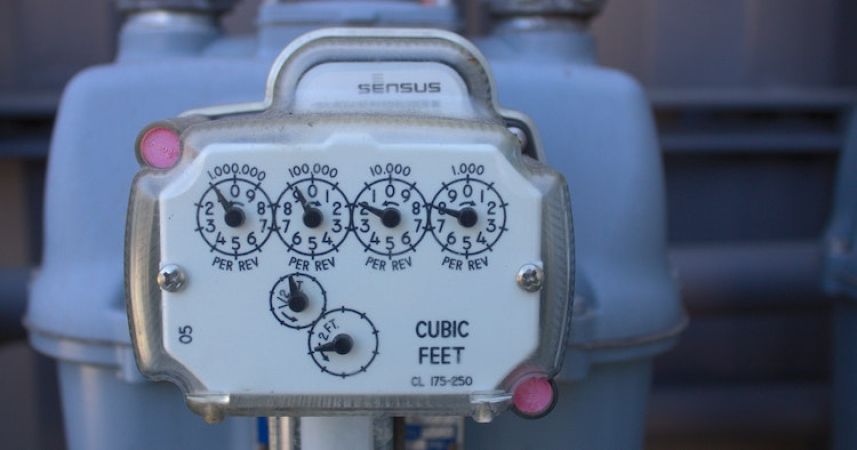
Targeted Charging Review (TCR) – Everything you need to know
What is Targeted Charging Review (TCR)?
The Targeted Charging Review (TCR) is an OFGEM initiated legislation aimed at revising electricity network charges of Distribution Use of System (DUoS) and Transmission Network Use of System (TNUoS). DUoS and TNUoS are charges on business energy bills that represent the cost of transporting energy from energy generation companies across the national grid to the final consumer.
In the OFGEM TCR initiative, DUoS and TNUoS charges will be linked to Available Supply Capacity (ASC), which is the maximum amount of energy that a site can draw from the national grid at any one time, agreed upon with the local distribution network. Businesses could experience increases in their energy bills as a result of TCR depending on their available capacity.
Instead of DUoS and TNUoS charges using unit rates calculated based on peak times and triads (charges based on the three half-hour periods of highest demand on the electricity network during winter months), TCR shifts this approach by banding costs according to the site’s available capacity. This means that instead of fluctuating charges based on usage peaks, charges are now more predictable and based on the agreed capacity of the site.
TCR aims to standardise costs, making the system fairer and more transparent. These changes came into full effect in April 2023.
Click here for a detailed breakdown of the latest DUoS and TNUos charges since TCR.
Why has TCR been implemented?
For many years large energy consumers were manipulating their energy consumption to shift their demand away from peak times. This is known as load shifting and enabled such businesses to avoid paying expensive tariffs during these peak periods. However, this has resulted in an imbalance, with some consumers underpaying for network costs while others covered the deficit. TCR addresses this issue by standardising how DUoS and TNUoS charges are applied.
How is TCR Calculated?
TCR charges are determined by your site’s ‘agreed supply capacity,’ which is the maximum energy demand agreed with your local distribution network. This capacity, measured in kilovolt-amperes (kVA), dictates the TCR banding for distribution charges. Higher agreed capacities result in higher TCR charges.
For example, a site with an agreed capacity of 1000 kVA will incur higher TCR charges than a site with an agreed capacity of 100 kVA. This shift aims to ensure that charges more accurately reflect the capacity demands placed on the network.
What is my TCR Banding?
TCR bands or Residual Charging Bands are allocated to you by your distribution network operator. For Non-half hourly metered businesses and small usage half hourly businesses, your annual consumption of energy will determine your banding. Energy meters were allocated a band based on their annual consumptions as of August 2020 and were using a 5 year average. Because of this banding is unlikely to change and there is a risk of your current consumption not matching the band assigned to you.
Banding for Non-half hourly customers and small usage half hourly buinesses
| Band | Annual Usage (kWh) |
| 1 | 0-3571 |
| 2 | 3572-12553 |
| 3 | 12554-25279 |
| 4 | 25280+ |
Large usage half-hourly meter businesses will incur an availability charge on their energy bill and Banding is based on the agreed supply capacity with the Distribution Network Operator.
Branding for Large usage half-hourly businesses
| Band | Low Voltage (kVA) | High Voltage (kVA) | Extra High Voltage (kVA) |
| 1 | 0-80 | 0-422 | 0-5000 |
| 2 | 81-150 | 423-1000 | 5001-12000 |
| 3 | 151-231 | 1001-1800 | 12001-21500 |
| 4 | 232+ | 1801+ | 21500+ |
Can you lower your ‘agreed supply capacity’?
While it is common to want to lower your agreed supply capacity to reduce TCR charges, this can be challenging. Adjustments are typically rare, but possible if there’s a significant difference between your agreed capacity and actual usage, for example, if there is a consistent difference of at least 1000 KVA, you may be able to reduce it and avoid the full impact of TCR. Unfortunately, an average over a 5 year period is often used when calculating these charges so any immediate changes will take some time before they come into effect.
Purposes of Storage
In rare cases, new sites used solely for storage (and therefore only using energy for simple lighting and security systems) might face high TCR charges due to historical consumption data from previous, more energy-intensive tenants. If your site is used primarily for these low-energy activities, you can appeal these charges. By providing evidence that your business model and energy usage are significantly different from the previous tenant’s, you can request a reassessment of your agreed supply capacity to reflect your lower energy needs more accurately.
Who will be affected the most by TCR?
When looking at electricity specifically, bigger electricity consumers will be affected the most because those with half-hourly meters also have KVA associated with their meters which influence the rate of TCR.
Accepting a rise in your energy costs
As businesses renew their energy supply contracts, it’s essential to recognise the impact of TCR on energy costs. When the energy supply contract renewal occurs, understanding how TCR costs are included in quotes is crucial for accurate budgeting. When evaluating energy contracts, it’s not just about finding the lowest price. Ensure you understand the forecasted costs, including any additional TCR charges if consumption exceeds forecasts. This preparation helps manage expectations and financial planning effectively.
Energy Suppliers presenting TCR costs
Energy suppliers may present TCR costs in different ways. Some might incorporate TCR charges into standing charges, while others may include them in the unit rate. It’s crucial to ensure transparency in these costs to accurately compare quotes when deciding on what energy contract is best for your business. Suppliers often prefer adding TCR to standing charges for predictability, as embedding it in unit rates can complicate reconciliation if actual consumption varies from forecasts. Understanding how TCR is included helps you make informed decisions about your energy contracts.
Is TCR one more reason to use an energy broker?
The complexities introduced by TCR and other legislative changes make it increasingly beneficial to work with an energy broker. Brokers can help you understand the implications of these changes, navigate the market, and find the best energy contracts for your business. They provide expert advice on managing your energy costs effectively and ensuring compliance with new regulations. Utilising an energy broker can simplify the process, allowing you to focus on your core business while managing energy expenses efficiently.
Keeping up to date on energy legislation
The implementation of the TCR marks a significant shift in how electricity network costs are distributed. Looking ahead, businesses should prepare for ongoing adjustments as OFGEM continues to refine network charging mechanisms to promote fairness and efficiency. Future legislative changes may further impact how charges are structured and calculated, so it is important to keep up to date with the latest energy news.
Our team is dedicated to keeping you informed and providing the best guidance based on current regulations.
If you have any questions when it comes to TCR, please contact us or call us on 0203 068 0000

Related Posts

A Guide to Blend and Extend Energy Contracts

Everything you need to know about your Business Energy Bill

